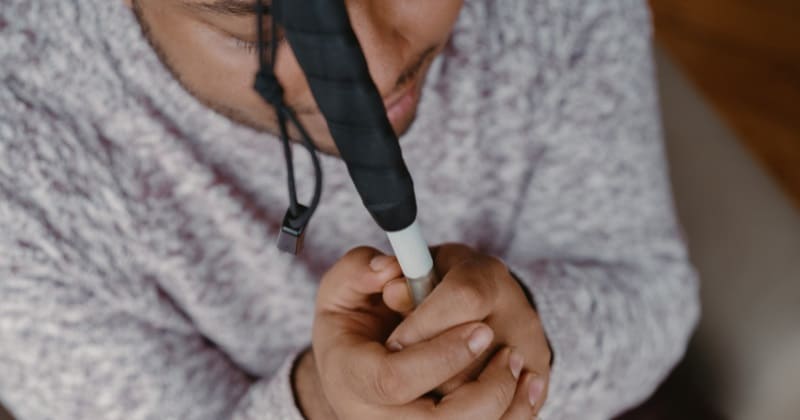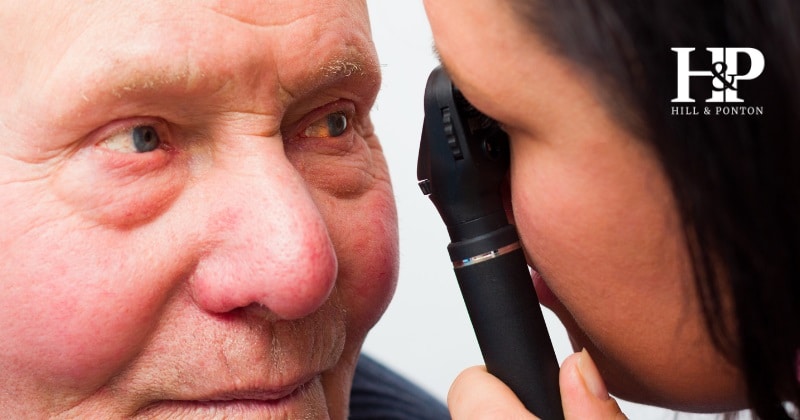Over a million veterans in the U.S. are impacted by vision loss, including more than 130,000 who are classified by VA as legally blind. Veterans who are blind in one eye and can link their disability to military service may qualify for VA disability benefits and other accessibility services and support from VA designed specifically for veterans with vision loss.
How the VA Calculates the Disability Rating
VA uses 38 CFR § 4.79 as the schedule for rating disabilities of the eye. This includes veterans’ disability claims related to loss of one eye and blindness in one eye.
The VA disability rating for partial blindness can range from 10% to 100%. A common disability rating for a veteran blind in one eye with ‘good’ vision (20/40) in the other eye is 30%, or 40% with 20/20 vision in the second eye.
However, a veteran who is blind in one eye with exceptional vision in the other will likely not receive a VA disability rating for vision loss. In this case, exceptional vision in one eye offsets blindness in the other, as rated by VA. The key difference between these two examples is the quality of vision in the veteran’s ‘good’ eye.
Monthly Compensation and Benefits
In addition to VA disability benefits, veterans impacted by accessibility issues related to vision loss or the loss of an organ (eye) may be eligible for Special Monthly Compensation (SMC). VA also offers additional supportive services and benefits for things like making alterations to a veteran’s home that improve accessibility, low vision aids, and unemployability compensation benefits.
Special Monthly Compensation
Veterans who are impacted by vision loss may be eligible for tax-free Special Monthly Compensation (SMC) benefits. Individuals with severe service-connected disabilities that impact their daily life and require regular assistance by another person (also called aid and attendance) – can apply.
SMC-K
Veterans who are blind in one eye may qualify for Special Monthly Compensation – SMC-K, a category that covers the loss or loss of use of a body part. SMC-K is unique because it can be added to a veteran’s regular monthly compensation rate. The additional award is payable for up to the loss of three body parts or organs (including the eye) – and the additional award is added on to the veteran’s monthly disability payment.
SMC-N 1/2
In addition, Special Monthly Compensation – SMC-N provides a higher rate of compensation benefits for veterans with service-connected disabilities that require additional care. Veterans with blindness in one eye may qualify with one of these specific conditions required by VA.
Unemployability Compensation
A veteran who is unable to work due to vision loss may also qualify for total disability based on individual unemployability (TDIU) benefits. Even if the veteran received a lower disability rating, TDIU could provide them with benefits at the same level as a 100% compensation rating from VA. Eligible individuals must be unable to maintain sustainable long-term employment.
It is important to note that being unemployed doesn’t mean that a person is unemployable. Applying for TDIU is a complex process that requires additional information from the applicant. Hill & Ponton is available to help veterans apply for and secure the TDIU benefits they deserve.
The VA Claims Process
To receive a VA disability rating for blindness in one eye, a veteran must provide in their claim:
- Current Diagnosis: A formal diagnosis in the veteran’s medical records.
- In-Service Event or Aggravation: Evidence of an in-service event, injury, or illness that either caused or aggravated the condition.
- Connection Between the Diagnosis and Service: A medical nexus must establish the link between military service and the condition
When submitting a VA claim online, in-person, or via mail, a veteran should also submit medical evidence, lay statements, and buddy statements to show the severity of their condition and its impact on their daily life.
Service Connection and Getting the Right Rating
When VA rates a service-connected disability, the veteran’s full history is considered, including military service and health records, private healthcare records, and witness statements covering the current condition, when it occurred, and its continuous impact.
Keep in mind that when rating service-connected blindness in one eye, any nonservice-connected vision impairment in the other eye is not considered unless that nonservice-connected eye is also blind.
If a veteran has experienced additional vision deterioration from when their service-connected disability was first rated by VA, they should appeal the decision and apply for an increase in rating.
Providing the right information to prove a link between blindness in one eye and a veteran’s military service, as well as current information about the condition and its impact on daily life – is key to receiving the highest VA rating. Hill & Ponton can help veterans prove service connection and make the strongest VA disability claim for vision loss. Contact us for a free case evaluation.




